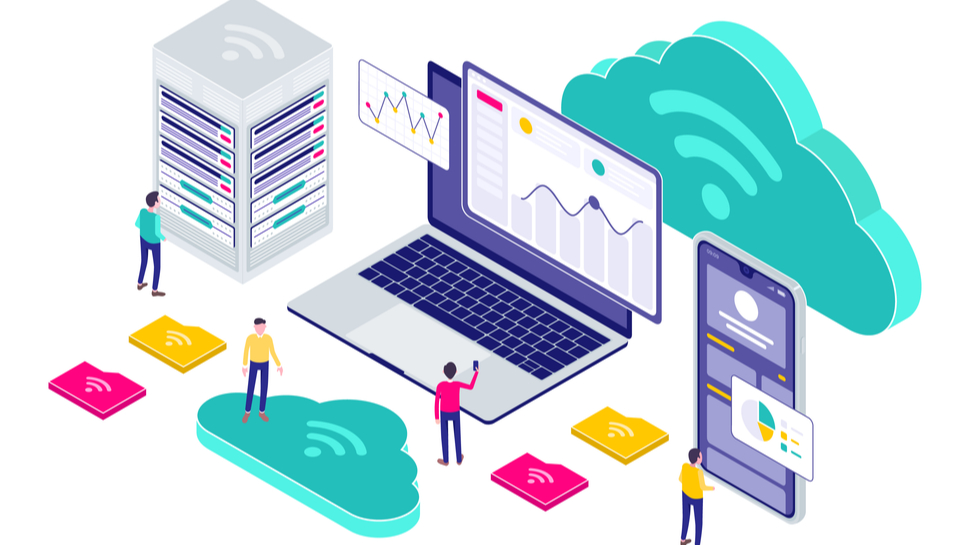
Expert Insights and Tips on Estimating Software Development Costs
source: generated with DALL-E 3
Custom software development unlocks the potential for programmes that are designed specifically to meet your needs, whether it’s tracking your fitness, managing your business inventory, or modelling a virtual environment. Unlike off-the-shelf alternatives, bespoke programmes can carry out an infinite range of tasks.
If you wonder, “How much does it cost to create a software?” the answer will be unexplicit: “It depends.” The final software development costs are as individual as the workscope for each project. Read our article to get a clue on the factors influencing software development costs before setting a budget for your custom programmes.
How much does software development cost? 4 methods to estimate the price
Technically, there are four methodologies for estimating budget and resource allocation. The table below describes each of them.
| Methodology | Description | Pros | Cons |
| Parametric cost estimation | Predicts project spending using algorithms based on key parameters like project size, complexity, and team size. | – Quick comparisons
– Precision |
– Simplicity can be misleading for complex projects
– Useless without detailed, accurate input data |
| Analogous cost estimation | Uses costs from past, similar projects as a baseline and adjusts for differences. | – Speed
– Ease of use |
– Accuracy depends on previous projects
– Outdated data risks |
| Bottom-up cost estimation | Estimates the cost of each part of the project individually and sums them up for the total. | – Detailed and accurate
– Flexible |
– Time-consuming
– Potential for cost overruns |
| Three-point cost estimation | Uses three scenarios (optimistic, pessimistic, and realistic) to predict project budget. | – Range of outcomes
– Balanced view |
– Complexity in calculation
– Assumption-dependent |
You can use one of these methods to create a rough budget that you can stick to. This infographic shows each of these methodologies in simple visuals:
source: jhotpotinfo.com
Seven factors influencing software development costs
No matter what methodology you use for estimating the price range, you should consider the main aspects influencing the final price tag for software:
- Workcope. Defining the project’s scope – detailing deliverables, budget, roles, and goals – simplifies management and accommodates inevitable changes more smoothly.
- Complexity. The complexity of a project depends on the number of systems interacting, such as databases and APIs. More interactions mean more resources and time will be needed.
- Time. Setting a deadline is essential. While software development is ongoing, having a projected completion date helps control costs.
- Geography. Software development can be expensive, with rates significantly varying by geography. For instance, outsourcing to regions like Eastern Europe or Asia might offer the same expertise at a significantly lower cost due to lower hourly rates in these areas.
- Seniority level. Developer costs also vary by seniority – from junior developers just starting out to seniors with over five years of experience. Higher qualifications typically command higher rates.
- Technology stack. The range of technologies required for a project affects the software price tag. A broader tech stack necessitates higher rates due to the specialised skills required.
- In-house vs. outsourced. According to a 2020 Deloitte report, 70% of businesses prefer to outsource their IT projects as it can reduce software development costs. External providers handle overhead costs like benefits and taxes, offering services at more competitive rates than local hiring.
Approximate prices for different types of software
source: Smart IT
How to pick the perfect software development partner
The success of the project’s final software development costs highly depends on the team you work with. Here are several steps for choosing a trustworthy contractor:
Check reviews and references
Study what previous clients say. A reputable agency won’t shy away from talking to past clients. It’s better when testimonials are either written or recorded on video, with the company’s name and the speaker’s position given.
Pay attention to reviews of similar projects – the more experience the company has, the smoother the development process will be. However, if you have a non-standard request, experienced contractors will catch up.
Assess the quality of communication
Look for agencies that use solid project management tools and methodologies. Regular updates and open channels of communication are crucial. If you feel that your project is neglected, then reconsider your choice of development company. Remember that any miscommunication can lead to your incurring.
Choose the right pricing model
As a rule, development companies work with these pricing models:
- Time and material. The final bill depends on the resources consumed and the time spent by the agency. It offers flexibility but has less predictable software development costs. If you are not sure about the workscope of your project, T&M can be your go-to.
- Fixed price. Here, the agency quotes a price for the entire project upfront, based on a defined scope of work. However, changes are hard to implement with a fixed pricing model, so this payment method is ideal primarily for small and simple projects.
- Milestone payments. This model breaks the project into phases, and you pay as each milestone is completed. As the work is divided into several parts, it’s easier to make corrections on the fly.
Choose the one that fits your goals and helps you avoid potential overpayments.
Scrutinise the contract and support
Ensure that the contract is clear about deliverables, timelines, and pricing. Vague contracts can lead to conflicts, especially if any unforeseen changes occur.
Also, look for agencies that provide robust maintenance and support. This will be more efficient and affordable than hiring a third-party company to fix bugs or change UI/UX details.
A final note
Software development costs depend on each stage of programme building. We recommend you study the market thoroughly in terms of your competitors, your position in the market, current trends, and development agencies. This will help you define what software you need and how to organise a working process to maximise profit.





